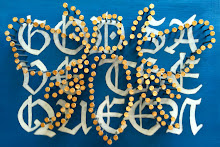On a recent trip to Washington DC I became re-acquainted with architectural symbolism ... symbols are everywhere, in all the buildings, plaques, monuments, walking surfaces ... representing justice, power, equality, knowledge, wisdom, faith ... they are embedded in the town layout, in the axes that connect the branches of government.
There they are, everywhere you look, speaking to the people and for the people, reminding us of the values this country was founded on. Justice is strong, represented by a lion's head; and slow, depicted by a turtle; the capitol is crowned by a lady looking into the future, standing for freedom; industry by a wreath of oak; the dead by stars , water is maritime power, flowers are beauty.
The American Revolution of 18th century was all about freedom and equality, a new world where all people (white, european, male) were created equal. Washington DC depicts those ideals and reminds us where we came from with the Washington, Jefferson, and Lincoln memorials.
There are also the war memorials, and none more powerful than the Vietnam Memorial by Maya Lin, which brilliantly reminds us why war is such a waste, such a catastrophe, by allowing us to see our reflection against the names of those who died.
Lincoln Memorial
Vietnam Memorial
And then I thought of our modern and contemporary buildings, in general completely devoid of these types of elements. How do they remind us of the social values that make us tick and why we are in this together?. Perhaps the new symbolism resides in the sustainable buildings and developments that, by featuring the green elements they incorporate, aim to teach us to respect the earth and its resources, keep it alive for future generations and by extension take care of each other.
Sustainability is the new power structure, the new paradigm that shapes our ability to continue creating strong and beautiful human settlements and preserve the ones we have.
Los Angeles has the potential of becoming the America of the 21st century by representing a new ideal of abundance for all while constantly replenishing our resources; making things that go back to enrich the source rather than to pollute it, as brilliantly put by McDonough and Braungart in their seminal book "cradle to cradle".
LEED Platinum Environmental Nature Center
Newport Beach, CA
On April 22nd, Earth Day, a brave group of concerned citizens gathered in a small public park in Silver Lake, a Los Angeles neighborhood, to start a New Revolution - Stop the rape of the earth by eliminating the use of plastic bags. Those few souls rebelling against the way things have been done (a way they see as anathema to freedom and equality) are in my book the Jeffersons, Washingtons and Lincolns of today.
Powerful, simple, deep, brave, visionary. Let us all be part of the New American Revolution.
The Plastic Bag Monster reminds us to stop using plastic bags.






